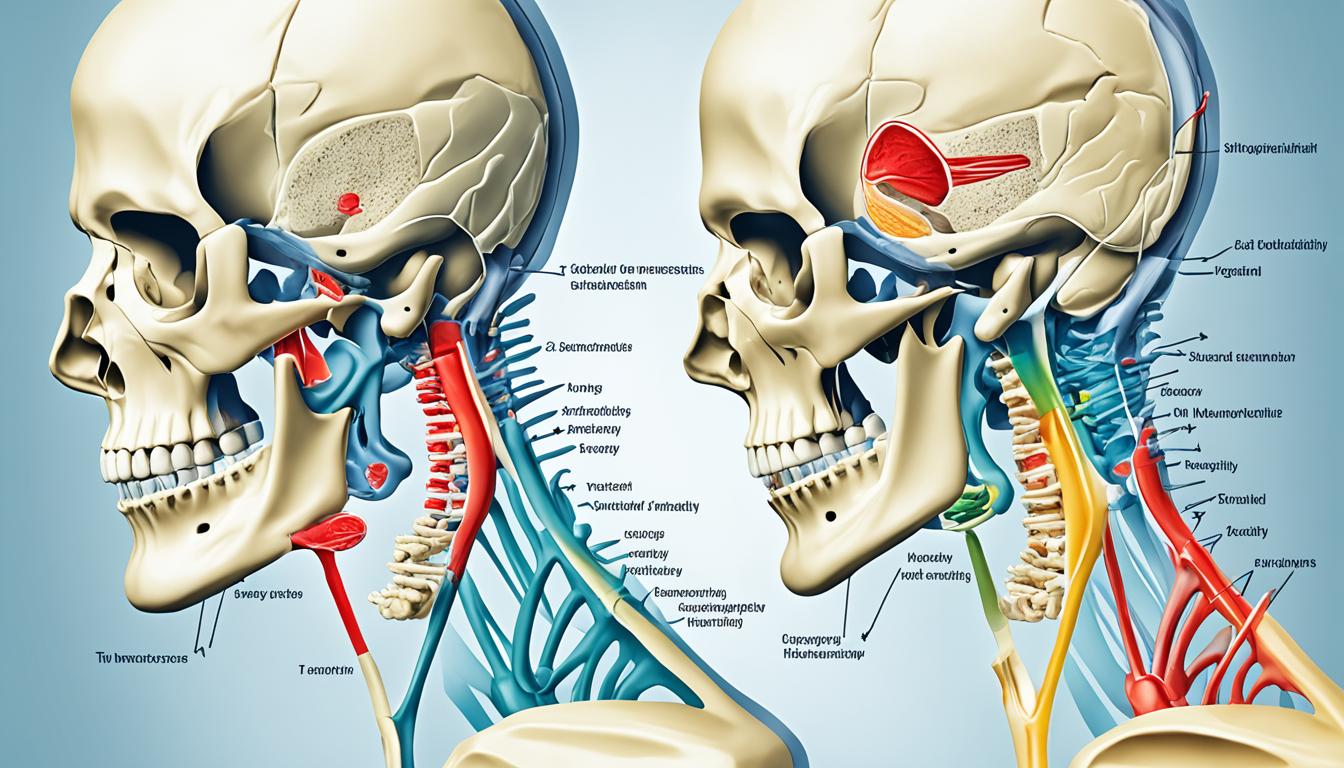TMJ disorders, also known as temporomandibular joint disorders, are problems in the jaw joint. They can make the joint look different and not work right. This can lead to TMJ pain and trouble moving the jaw, affecting how someone lives.
It’s important to know what causes TMJ disorders and their symptoms for early diagnosis and treatment. These disorders are complex, making treatment a challenge. But, thanks to new medical findings, there are exciting options like stem cell therapy.
Recently, stem cell therapy has been making good progress in helping with TMJ issues. In one case, a woman with severe TMJ pain and little jaw movement had the Regentime procedure. This procedure uses stem cells from her own bone marrow. Afterward, she fully recovered.
The Regentime procedure is becoming known for its ability to help repair joint tissues. It uses stem cells.*
Key Takeaways:
- TMJ disorders affect the jaw joint and can be serious.
- Common symptoms include TMJ pain and jaw issues.
- Stem cell therapy is an exciting treatment option for TMJ disorders.
- The Regentime procedure uses a person’s own stem cells for repair.
- Other treatments include therapy, medication, and counseling.
*In accordance with the guidelines, liminking to external websites is not allowed.
Understanding TMJ Disorders and Their Impact on Jaw Function
The temporomandibular joint (TMJ) is a key joint in our body. It lets us move our jaw for several actions. These include chewing, speaking, and even making facial expressions. The joint regulates ear pressure and allows our jaw to move forward, backward, and sideways.
Issues with the TMJ can change the way we live. It makes simple tasks painful, like chewing, speaking, or even moving our jaw. You might hear clicking sounds or feel like your jaw locks. Seeking help early for these TMJ issues is crucial. It can stop further problems and make life more comfortable.
| Functions of the TMJ | Symptoms of TMJ Disorders |
|---|---|
|
|
Diagnosis and Causes of TMJ Disorders
Diagnosing TMJ disorders includes looking at a patient’s medical history. Doctors also check the symptoms and do a physical examination of the jaw. They might use diagnostic imaging like X-rays, CT scans, and MRIs. This is because TMJ disorders share symptoms with dental issues, tension headaches, or ear infections.
There are many possible causes of TMJ disorders. These include:
- Physical injury to the jaw
- Arthritis
- Clenching or grinding of teeth (bruxism)
- Autoimmune factors
- Dental surgery or procedures
- Infections
- Hormonal changes
Finding the causes of TMJ is key to treating and preventing it. Doctors can make treatment plans tailored to each patient. This tackles the reasons behind their TMJ issues effectively.
Conclusion
TMJ disorders affect the jaw joint’s function and comfort. They are complex issues in the muscles and bones around the joint. Traditional treatments like therapy, medicine, and talking to a professional can help early on. But now, we’re turning to stem cell therapy for new hope.
It’s essential to find and treat TMJ disorders early. Knowing what causes them is key to good treatment. By looking at different ways to help, like stem cell therapy, people with TMJ can feel better. Talk to an expert on TMJ to figure out the best treatment for you.
The future of TMJ disorder care is looking up with new medical tech. Stem cell therapy is a bright spot, possibly improving TMJ for the long term. By tackling the main issues and trying new treatments, patients might get their jaw functioning well again.
FAQ
Q: What are TMJ disorders?
A: TMJ disorders, or temporomandibular joint disorders, are problems affecting the jaw. They cause issues with how the joint works, often due to wear and tear.
Q: What are the symptoms of TMJ disorders?
A: People with TMJ disorders may feel pain in their jaw. They might also have trouble moving it, hear odd sounds, or feel like their jaw is stuck.
Q: How are TMJ disorders diagnosed?
A: Doctors diagnose TMJ by looking at a patient’s history and symptoms. They also feel and listen to the jaw. Sometimes, they use X-rays or scans to check the joint.
Q: What causes TMJ disorders?
A: TMJ disorders can happen for many reasons. Causes include jaw injuries, arthritis, or habits like grinding teeth. Autoimmune issues, dental work, and even hormones might play a role.
Q: Can stem cell therapy help with TMJ disorders?
A: Stem cell therapy shows hope for repairing TMJ tissues. The Regentime procedure uses a person’s own stem cells, offering a new way to heal joint problems.
Q: What are the other treatment options for TMJ disorders?
A: Treatments for TMJ disorders include physical therapy and medications. Counseling might also help, especially if stress makes the condition worse.

